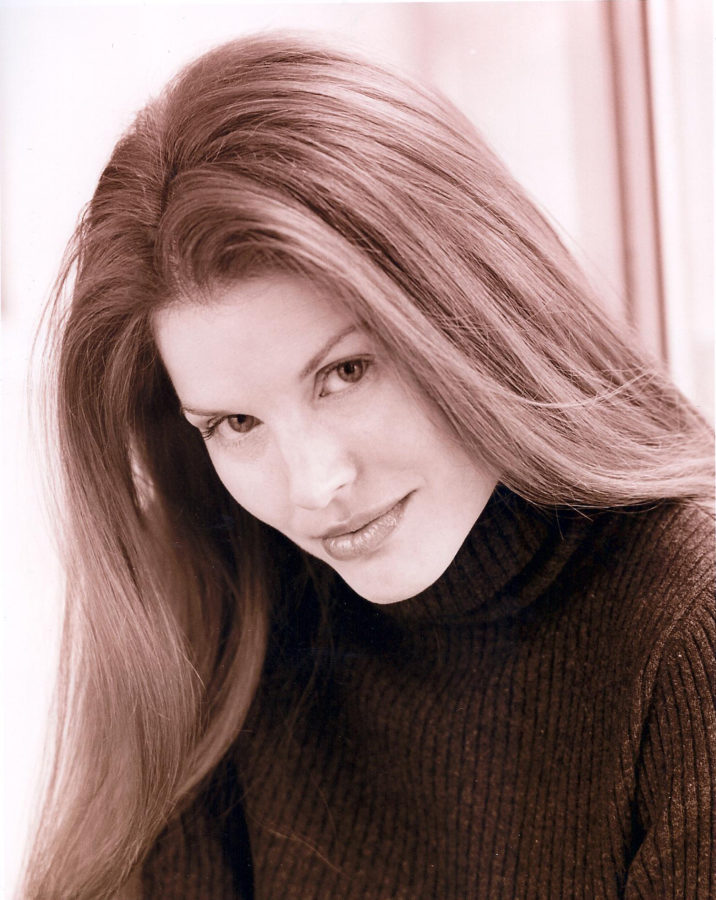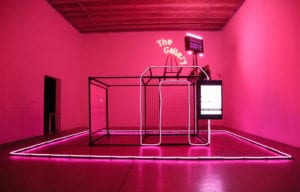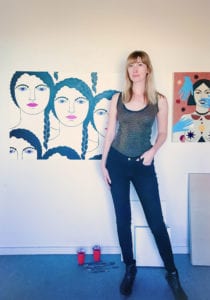Just like everything else, art is embracing the digital age.
But there’s an unusual tension between art and technology. They defy each other in several fundamental ways. In tech, both producers and consumers want what’s next. Art, on the other hand, opposes obsolescence. Painting is far from dead, and, regardless of the medium, artists want their work to last. Moreover, unlike in tech, for art “new” or “first” often don’t equate with “best.” Greatness is about being special. Bucking our mass-market world, artists often artificially limit their production to enhance the value of their work with rarity. Tech strives to make it increasingly easier for us to reproduce the same images and objects. Art pushes back against that proclivity to homogenize. Instead, artists cater to our desire for high-quality experiences of the unique. Like so much of our Trumpian world right now, art and tech represent extremes.
Still Life 1.2, 2019 (excerpt speedup) is the latest work available from Claudia Hart, along with two other videos in her Still Life series on Niio, a new platform for experiencing new media art. Courtesy of Niio.com.
Despite, or maybe because of, these contradictory impulses, tech-based art is flourishing. In the video above, Claudia Hart used simulation software to reimagine what art can be. Still Life 1.2 is based on a Matisse painting, The Blue Window, from 1913, which he structured with the new geometry of Cubism. Riffing on that and the other Matrix (of Keanu fame), Hart reinterprets the painting as a mathematical grid, generating an image that straddles both her singular point of view and a larger, historical vantage point.
Artists often use technology to examine the very dilemmas that digitization is bringing us. The genre, called New Media, encompasses film, video, and software as well as works made with simpler mechanisms like motors and lasers. New media art can also be traditional objects that are digitally born, like Print Wikipedia, a work by Michael Mandiberg that explores one challenge of knowing in the age of big data. Mandiberg observes in the work that, while the digital age has given us much faster access to knowledge, it’s also created far more information than anyone can know. He made that paradox overwhelmingly real by printing only 106 of the 7,473 volumes of English Wikipedia as it existed on April 7, 2015. He drove his point home further with the fact that, the day after its printing the work was already obsolete.
Regardless of the form it takes, art and tech feed off each other. Artists break down boundaries to conceive of things the rest of us can’t see. They often use tech to do that, and, in the process, spawn yet more tech. In fact, for two decades, an NYC non-profit called Eyebeam has been funding art/tech projects so radical that neither the art nor the tech worlds initially know what to do with them. The minds steeped in Eyebeam’s soup of primordial digitization have brought us paradigm-shifting art as well as Buzzfeed and NASA spacesuits—the latter of which started out as art. If you think that’s lit, check back in for the artists I’m gonna bring you in New Media Art II.
The Alices Walking, A Sculptural Opera and Fashion Show by Claudia Hart is one of my most memorable art experiences. The artist is wearing a sculpture helmet, and I’m the redhead viewing the augmented reality images printed on the performers’ costumes through an iPad. Photography by Abigail Simon. Video courtesy of the artist.
The Alices (Walking), 2014 from Claudia Hart on Vimeo.
Speaking of having your mind blown, one of my most epic art experiences is documented in the video above, also by Claudia Hart. I met her at an Eyebeam event in 2014. Three weeks later, I was on stage with her in her multi-layered performance piece, The Alices Walking. The work explores a world so addicted to devices that we can only bear to look at the things we’ve filtered through them. Sound familiar?
Hart is anything but anti-tech. She’s a pioneer of new media, who started writing code back in the day, way before it was even a thing in art. The magic of The Alices Walking is that it questions the way we interact with computers while simultaneously revealing new ways for us to do it. Hart reached back to the surreal imagery of Alice in Wonderland—a touchstone that runs through her work. Via a fragmentation program, she boiled the storybook text down into cryptic poetry like, “I am improved,” “Everything is today,” and, of course, “Eat me.” She rendered those text fragments into code that she embedded within the patterns of fabric that then became wearable sculpture. The results of that code could only be seen through the lens of the Looking Glass app that she created. When the performers were viewed through her app, we saw an augmented reality in which the text appeared on top of the performers’ costumes. The audience was separated from us by a velvet rope and, if they weren’t privileged enough to have the app, they only got to see what we deigned to show them. The work is a disturbingly prophetic ode to the perils and awe of Instagram culture.
In this video, Inside The Flower Matrix (2017), Hart recreates the trippy experience of wandering through the virtual reality labyrinth that the video is based on.
Inside The Flower Matrix from Claudia Hart on Vimeo. Courtesy of the artist
While augmented reality brings the digital into our world, virtual reality envelopes us in the digital realm. From virtual museum tours to whole new dimensions, artists are blazing the virtual reality trail. Confession—I’m still a VR novice. Even watching Hart’s trippy 2D experience of wandering through the VR labyrinth, Inside The Flower Matrix, gives me motion sickness. But new advances in VR tech might soon overcome that problem with a new form of virtual movement that will trick our bodies into finding it more natural.
Happily, the VR revolution is definitely here to stay. Christie’s just featured Hart’s fourth Alice-based work in the Art + Tech Summit at their New York salesroom. Once the auction houses have jumped on the bandwagon, there’s no going back. In this case, that’s a great thing.
Alice, 2019 by Claudia Hart. Courtesy of TRANSFER. Featured at Christie’s 2019 Art + Tech Summit in New York.
Alice, 4-minute excerpt of a 10-minute piece from Claudia Hart on Vimeo.

Holly Hager is an art collector and the founder of Curatious. Previously an author and a professor, she now dedicates herself full-time to help artists make a living from their art by making the joys of art more accessible to everyone.



